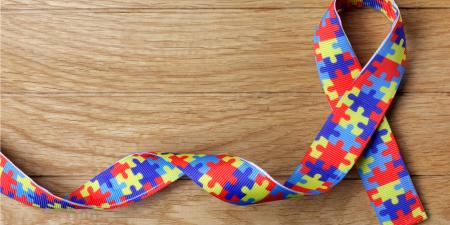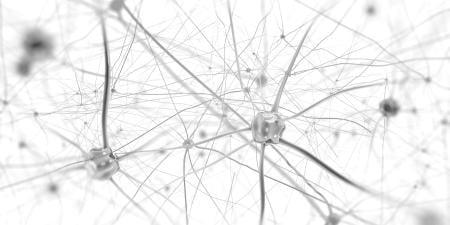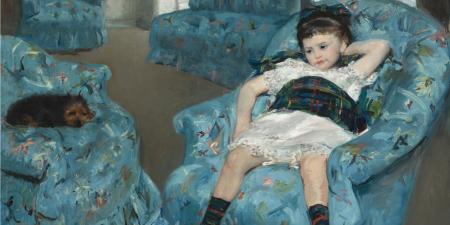Creativity is a difficult concept to define. It encompasses many human endeavors, including the arts—painting, sculpting, dance, song, poetry, music, photography—and the sciences—mathematics, physics, cosmology, chemistry, geology, biology, psychology, and so on. It crops up everywhere from small innovations to acts of genius that change the way whole societies live, think, and behave. It is hard to define and harder to capture, yet creativity seems to be an essential part of human culture. Most definitions of creativity involve the element of novelty; somehow the result must be a new idea or concept (at least to the creator), generally of great perceived value or difficulty of attainment.
Graham Wallas’s four-stage model of creativity is one of the most widely quoted [1]. Wallas identifies the first stage of creativity as preparation—a sort of prerequisite or prelude to creativity, in which the skills and knowledge required to engage in the creative act are acquired. For some activities, this preparation may take years or decades, and the information amassed can be confined to a single discipline or, as in some of the most unprecedented leaps, span disparate, even previously unconnected areas of knowledge.
Preparation shades into the second stage of creativity: incubation. While the creator may engage in an active search for a new answer to a question, much of this phase is performed preconsciously through the cognitive function known as parallel processing. The final phases of incubation seem to be best performed in a relaxed or low-arousal state. While only the strongest semantic connections tend to come to the attention of the conscious mind when the brain is in an excited state, relaxation may allow for weaker—which is to say, less obvious or “presemantic”—connections to rise to the fore.
The third stage is, perhaps, the briefest, but it is the key to the creative act. This is the stage of illumination, sometimes referred to as the “Aha!” or “Eureka!” moment. Illumination is when the aforementioned semantic connections are recognized by the conscious mind. In the third century BCE, Greek inventor Archimedes had the original “Eureka!” moment while relaxing in a bath, which served as the inspiration for his discovery: he could use water displacement to discern the volume of irregularly shaped objects, such as the crown he had been charged to discover the composition of without melting down. Popular legend has it that many other famous discoveries occurred during periods of idleness: Einstein is said to have made progress toward the theory of relativity while on the clock at a dull patent-office job; Newton is believed to have had critical insights about gravity under an apple tree in his mother’s garden; and the Nobel-Prize-winning chemist Kary Mullis reported having a breakthrough during a late-night drive down a monotonous stretch of empty highway.
Of course, it is possible to have the sensation of illumination about a connection that is actually too weak to stand, or not in fact new—a false positive, if you will. This brings us to the last stage of the creative process, verification, in which the product of illumination is validated, often at least in part through the creation of an artifact (e.g., an artistic work, a model, a written plan, or an equation).
What Makes a Brain Creative?
Brain scans have given us the primitive ability to measure, or at least perhaps see, the creative process at work. Carlsson et al. found cerebral blood flow differed between high- and low-creativity participants who had been separated into two groups on the basis of very high or low scores on a creativity test. The highly creative had increased blood flow in some regions during a verbal creativity task, while the lower-creativity group actually experienced a decrease in blood flow in the same regions [2]. While the dominant (left) frontal lobe was active in both groups during a primarily verbal task, blood flow to the non-dominant (right) frontal lobe increased only in the highly creative group. This may indicate more efficient but less extensive processing in the less creative group.
We know that intelligence, as measured by IQ testing, is to some degree necessary but not sufficient by itself to the creative process. Terman found that later success of children in the gifted range of intelligence quotient (IQ), at least based on the careers and later achievements they self-reported, did not demonstrate particular creativity [3]. In 1973, Guilford and Christensen used divergent thinking—the ability to break conventional thought patterns to discover a new answer—as a surrogate for creativity and compared creativity (or here, divergent thinking) to IQ. They found a triangular relation; divergence was correlated with IQ at lower IQ scores, but became less so as IQ approached 130 [4].
Some locations in the brain for some functions associated with creativity have been tentatively proposed. Feelings of illumination, for example, have been associated with right temporal lobe function in studies like Jung-Beeman’s electroencephalographic observation of patients experiencing insights in problem solving [5].
Divergent thinking is often felt to be a frontal-lobe function [6]. Heilman postulates that white matter connections and general interconnectivity between disparate parts of the brain may increase the formation of novel associations and new ideas [7]. Jung et al. attempted to find links between cortical thickness and high creativity index scores assigned to a group of participants by 3 independent judges. They found that increased cortical volumes in the right posterior cingulated cortex, the right angular gyrus, and the lower left orbitofrontal cortex correlated with higher creativity index scores [8]. Decreased cortical volumes in the lingual gyrus also correlated with greater creativity scores. While the cortical thickness results are intriguing, we do not know whether increased cortical thickness is a marker for creative potential, or a result of creative activity.
How does the classic model of the stages of creativity relate to modern findings about the neurobiological localization of function? The theoretical model predicts that, during incubation, there is increased activation of weaker semantic connections in the brain. As explained above, some of the functional neuroimaging studies showing increased non-dominant (right) frontal lobe activation in highly creative individuals, particularly those engaged in divergent thinking, may point to the right frontal cortex as a “center” for incubation.
Illumination has, surprisingly, the most solid localization of the classic stages of creativity, with several studies converging on the non-dominant (right) temporal lobe as the main region of the brain activated during moments of recognition of novelty and the illumination experience. Since the verification stage requires critical thinking and analysis, dominant (left) frontal lobe function may be important to that part of the process.
Final Thoughts
While we are just beginning to discover the neuroanatomical and neurochemical correlates of creativity, we are still at a very early stage of understanding what those correlations mean. We do not know whether the distinct qualities of the brains of highly creative people are the source of their creativity or a result of their creative activity.
One might speculate about what the world would be like if we could predict creativity based on brain structure and function. I think it would be foolish and dangerous to try to steer people into creative and noncreative tracks of endeavor based on brain correlates—indeed, such a process might diminish the creative potential of our population. Some people may be able to develop or train to become creative, and perhaps come up with important ideas that would be different from those of individuals predisposed to be naturally creative.
I think the best use for such an ability would be to help develop training strategies for those who have difficulty engaging in creative or divergent thinking. If we understand the brain-behavior relationships in creativity, we will be better able to encourage and facilitate it.
I believe strongly that we should foster creative ability in everyone. I am reminded of a story my mentor, Ken Heilman, tells, of a developmentally delayed man whose job it was to sweep up on a court. One day, he devised a new and improved way to sweep the court and was well pleased with his discovery. While this creative act may not change the world, it bettered this man’s life. So may we all benefit from understanding and fostering creativity in our lives.
References
-
Wallas G. The Art of Thought. New York: Harcourt, Brace and Company; 1926.
- Carlsson I, Wendt PE, Risberg J. On the neurobiology of creativity. Differences in frontal activity between high and low creative subjects. Neuropsychologia. 2000;38(6):873-885.
- Terman LM. The discovery and encouragement of exceptional talent. Am Psychol. 1954;9(6):221-230.
- Guilford JP, Christensen PR. The one-way relation between creative potential and IQ. J Creative Behav. 1973;7(4):247-252.
-
Jung-Beeman M, Bowden EM, Haberman J, et al. Neural activity when people solve verbal problems with insight. PLoS Biol. 2004;2(4):e97.
-
Zangwill OL. Psychological deficits associated with frontal lobe lesion. Int J Neurol. 1966:395-402.
- Heilman KM, Nadeau SE, Beversdorf DO. Creative innovation: possible brain mechanisms. Neurocase. 2003;9(5):369-379.
- Jung RE, Segall JM, Bockholt HJ, et al. Neuroanatomy of creativity. Human Brain Mapping. 2010;31(3):398-409.



